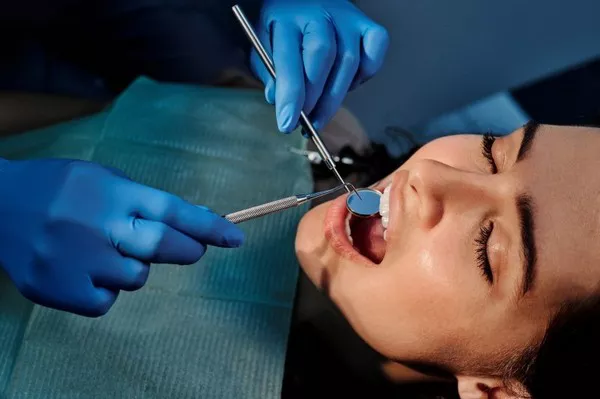Encountering a failed dental implant can be a daunting experience for both patients and dental professionals. Despite the high success rates associated with dental implant surgery, complications can arise that lead to implant failure. However, it’s essential to understand that failed dental implants can often be salvaged with the right approach and intervention. In this comprehensive guide, we’ll explore the various causes of dental implant failure and outline effective strategies for diagnosing and addressing the issue, helping patients regain their oral health and confidence.
1. Understanding the Causes of Dental Implant Failure:
Peri-implantitis: One of the most common causes of dental implant failure is peri-implantitis, a condition characterized by inflammation and infection of the tissues surrounding the implant. This condition can occur due to poor oral hygiene, smoking, or underlying periodontal disease.
Poor Osseointegration: Failed osseointegration, where the implant fails to integrate properly with the surrounding bone tissue, can occur due to factors such as inadequate bone quality or quantity, surgical errors, or systemic health issues.
Mechanical Complications: Mechanical complications such as implant fracture, screw loosening, or prosthetic component failure can also contribute to implant failure. These issues may arise due to excessive forces, improper occlusion, or suboptimal implant design.
2. Diagnosing Failed Dental Implants:
Clinical Examination: A thorough clinical examination, including visual inspection and probing of the implant site, can help identify signs of peri-implantitis, such as bleeding on probing, suppuration, or peri-implant pocket formation.
Radiographic Evaluation: Radiographic imaging, such as periapical or panoramic X-rays, can provide valuable information about the condition of the implant and surrounding bone tissue. Radiographic signs of implant failure may include peri-implant bone loss, implant mobility, or radiolucency around the implant.
Microbiological Analysis: In cases of suspected peri-implantitis, microbiological analysis of peri-implant biofilm may be performed to identify the presence of pathogenic bacteria associated with implant failure.
3. Treatment Options for Failed Dental Implants:
Non-Surgical Treatment: In cases of early-stage peri-implantitis, non-surgical interventions such as mechanical debridement, antimicrobial therapy, and adjunctive therapies like laser treatment or photodynamic therapy may be effective in resolving inflammation and promoting tissue healing.
Surgical Intervention: Advanced cases of peri-implantitis or implant failure may require surgical intervention to address peri-implant defects, remove infected tissue, or improve osseointegration. Surgical procedures such as guided bone regeneration, bone grafting, or implantoplasty may be performed to salvage the implant and restore peri-implant health.
Implant Removal and Replacement: In cases where the implant cannot be salvaged, implant removal followed by implant replacement may be necessary. This approach allows for the placement of a new implant in a healthier environment, addressing any underlying factors contributing to implant failure.
4. Preventive Measures to Avoid Implant Failure:
Comprehensive Patient Education: Providing patients with thorough education about proper oral hygiene practices, lifestyle modifications (such as smoking cessation), and the importance of regular dental check-ups can help prevent implant failure.
Strict Maintenance Protocols: Implementing rigorous maintenance protocols, including regular professional cleanings, implant maintenance visits, and peri-implant tissue monitoring, can help detect and address early signs of peri-implant disease before they progress to implant failure.
Collaborative Treatment Planning: Collaborating closely with other dental specialists, such as periodontists or oral surgeons, can ensure comprehensive treatment planning and optimal outcomes for patients at risk of implant failure due to complex anatomical or systemic factors.
Conclusion
In conclusion, addressing a failed dental implant requires a thorough understanding of the underlying causes, accurate diagnosis, and appropriate treatment strategies. By identifying and addressing factors contributing to implant failure, such as peri-implantitis, poor osseointegration, or mechanical complications, dental professionals can effectively salvage failed implants and restore oral health and function for their patients. Additionally, implementing preventive measures such as patient education, strict maintenance protocols, and collaborative treatment planning can help reduce the risk of implant failure and improve long-term outcomes. With a multidisciplinary approach and a commitment to excellence in patient care, dental professionals can navigate the challenges of implant failure with confidence and achieve successful outcomes for their patients.
How to prepare for dental implant surgery
Can I Drive After Dental Implant
Can you drive after dental implant surgery?





























